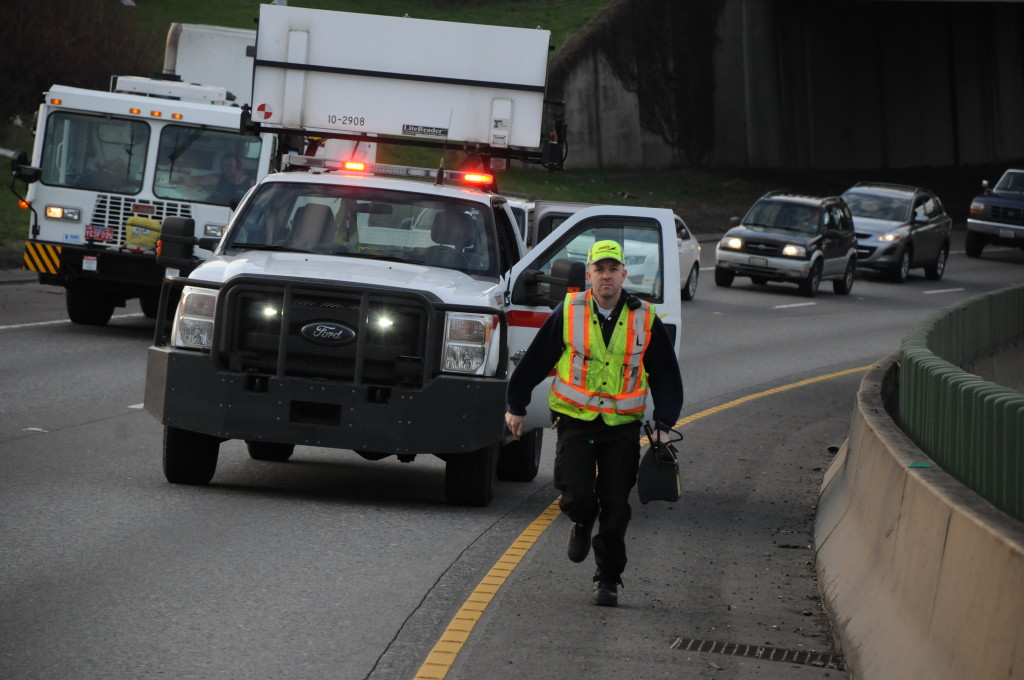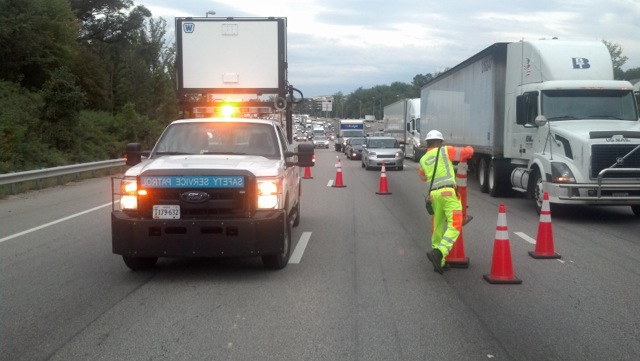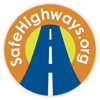Safety Service Patrols Often Lack Budget,
Resources to Promote Programs
By Mindy Long
Those who operate or have utilized state’s Safety Service Patrols (SSP) know there is real and perceived value in the programs, but due to a lack of resources, not all operators formally measure the public’s awareness of the patrols. For those that do, surveys found the public felt they could rely on patrols and understood cost savings associated with the services.
“The challenge has always been and continues to be how to quantify what our Incident Management Assistance Patrol program does and the benefit in terms of dollars and lives saved that it provides,” said Cliff Braam, traffic operations and incident management engineer for the North Carolina Department of Transportation. “This is an extremely challenging and complex issue to tackle and to date, we have not come up with a viable method of doing so.”
Although the NCDOT has not undertaken a formal survey or poll, Braam said most managers within the DOT see the IMAP program as a benefit both in terms of incident management activities—traffic control for crashes, clearing roadway debris, etc.—and for motorist assistance—enabling disabled vehicles—and increasing the overall level of safety—quicker clearance times, reduced secondary crashes, etc.—to the traveling public.
Braam said that judging by the responses patrols receive when they provide assistance, the majority of motorists are not aware of the service. To help promote the DOT’s IMAP program, patrol drivers hand out cards that direct drivers served to a website where they can learn more about the program as well as take a survey regarding their experience. “However, this is one small step and there are many other things that could be done to assist with raising awareness. Again, it boils down to available resources,” he said.
Dave Thompson, a spokesman for the Oregon Department of Transportation, said the department does not formally measure the public’s awareness or attitude of its safety patrols, but understands there is a benefit. “We have tons of anecdotal informal qualitative information from people we’ve helped, but we haven’t done any quantitative primary research,” Thompson said.

Oregon DOT Incident Response helps thousands of motorists annually, but not all motorists may be aware of the program prior to receiving assistance. Photo provided by Oregon DOT.
Among those states that have done formal surveys, feedback has been positive. A 2014 survey by Florida’s Turnpike asked respondents if they felt confident a State Farm Safety Patrol Road Ranger, highway patrol or a wrecker operator would respond in a timely manner to their being stranded on the Turnpike. Among respondents, 26 percent said they strongly agreed and 43 percent agreed; 10 percent either disagreed or strongly disagreed and 21 percent had no opinion.
A University of California at Berkeley study, sponsored by Caltrans, evaluated the effectiveness of safety patrols on a section of the I-880 freeway and found that assisted motorists incurred time savings because of the faster response time and direct cost benefits because of the free service provided by the patrol—estimated at $70 per assist. What’s more, mitigating delays led to savings in fuel costs and daily reductions in air pollutant emissions of 60 Kg of hydrocarbons, 472 Kg of carbon monoxide and 122 kg of oxides of nitrogen.
In a study conducted by the Virginia Department of Transportation (VDOT) and the Hampton Roads Freeway Incident Response Team, researchers found that consumer response surveys revealed a perceived value of as much as $76 per assist, which the report said demonstrates the public’s perceived value of the program.
In 2014, VDOT’s Safety Service Patrol assisted in 147,276 incidents, and Rick Via, statewide incident management and safety service patrol program manager for VDOT, said each interaction is a good way to promote the program. “That is 147,276 opportunities to engage a citizen. That is a lot of exposure,” he said, adding that VDOT has a public-facing web portal for the program and patrol drivers provide a customer service card that gathers feedback.
Paul Pegher, project manager for the division of communications for the Ohio Department of Transportation, said Ohio measures the effectiveness of the freeway safety patrol by the number of incidents to which it responds and the agency has provided nearly 17,000 direct-driver assists since November 2014 while also providing non-direct assists, such as clearing debris or providing emergency management.
The Ohio patrol also measures customers’ perception through an online survey tool, which operators ask drivers to submit after receiving service. Since November 2014, ODOT received feedback from 998 motorists, and that feedback has been overwhelmingly positive, rating the service as either “very good” or “excellent.”

While Ohio DOT does not generally focus on promoting the patrol, it did conduct a cross state caravan when a new operator launched last Fall and earned modest media attention as a result.
Overall, the Ohio Department of Transportation does not strive to promote the program. “As a government agency funded by tax dollars, we must apply our resources to doing that work, and not necessarily promoting it,” Pegher said.
However, Ohio’s Department of Transportation has taken steps to increase awareness. “In October 2014, we conducted a cross state caravan of the entire new fleet, just days before it went into service—an event that earned modest media attention in the cities that the patrol serves,” Pegher said, adding that the agency will continue to feature the patrol at other safety-related events and highlight its work through social media and safety-related events.
VDOT has taken a similar approach, engaging in community promotions, taking part in safety talks and social events at schools, local first-responder activities and recruiting fairs. “We’ve done a PSA on how we as a DOT influenced an unfortunate event on the highway,” Via said. “Every time our public affairs department gets a chance to do a PSA, they seize the moment.”
VDOT is also using Twitter, Facebook and YouTube to promote the patrols’ work and spread traffic information. The agency also uses 511 to promote the patrols and details 511 information on brochures it distributes about the program.
Hawaii’s 511 program is currently in the testing phase, but Benson Chow, an engineer with the Hawaii Department of Transportation, said it can be another avenue for the state to promote the patrols. In addition, the agency promotes the program through,Goakamai.org a travel tool designed to make commuter’s trips easier and faster, and fsphawaii.com websites. “We also use surveys to help oversee the program to make sure drivers are doing what they are supposed to be doing. The response has been highly successful,” Chow said.
The Hawaii Department of Transportation has also gotten good media coverage of its program to help increase awareness. “They’ve done general stories throughout the program,” Chow said.
Via said awareness of the program can aid with funding. “Greater awareness of the program enhances everyone’s safety and helps sustain the program,” he said, adding that the public’s perception of the program is obvious when budget cuts loom. “There have been years past when the SSP program has been cut in whole or in portion and the public rallies up and creates a lot of chatter on why. It creates a firestorm of media outreach and feedback from citizens saying they need it.”
Chow agreed that the program generates goodwill among the public and creates greater favorability among legislators, which can also lead to increased funding opportunities.
Ish Garza, assistant chief traffic operations engineer for the Nevada Department of Transportation traffic operations, said the state’s Freeway Service Patrol (FSP) does not measure public awareness of the program. “While public awareness of the FSP contributes to the Transportation Board’s continued support for funding of the program, NDOT does not believe that public awareness would contribute to the effectiveness of the FSP in the performance of its mission,” he said.
Garza said NDOT believes that a small but significant percentage of the freeway-using motoring public is aware of the FSP removing incidents from the freeways during peak traffic periods. “This awareness occurs principally through the FSP presence on the freeways while patrolling and mitigating incidents,” he said.
Like NDOT, for many DOTs, the visibility the freeway safety patrols provide is one of the key marketing methods. “Its work is visible, operational and making a difference every day, amid the people who need it the most. We can’t ask for better marketing than that,” Pegher said.
Via believes that regular commuters are very well aware of the patrols, which are well marked. Chow said Hawaii’s patrol vehicles are also marked with the HDOT logo as well as the freeway safety patrol.

For many DOTs, the best marketing for Safety Service Patrols is their work out on the freeways every day and the well marked vehicles in which they patrol. Photo provided by Virginia DOT.
When NDOT does undertake outreach on the program, press releases emphasize the safety aspects of vehicle maintenance and safe driving practices and don’t focus on promoting the safety patrol. They are typically released ahead of high-traffic holidays or severe weather. “Various print and electronic media outlets periodically feature the FSP during those same periods,” Garza said, adding that the agency promotes NDOT’s overall mission, which includes providing a safe and efficient transportation system through various programs.
For the Oregon Department of Transportation, there is no budget to raise awareness via radio or TV ads, and even if there were, the department “wouldn’t want any awareness efforts to be perceived as advertising or tooting our own horn, which is generally frowned upon when government agencies do it using taxpayer money,” Thompson said.
“We certainly have measurement results for number of contacts made, etc. But we don’t have hard quantitative data—nor have we done a survey—about people’s awareness or attitude about this particular service,” Thompson said.
For those looking to increase awareness, Robert Rabe, statewide safety service patrol and strategic initiatives program coordinator for the Virginia Department of Transportation, suggests they seize “those opportunities that are non-descriptive to the citizens,” such as detecting incidents that are then reported on the morning news, giving commuters a chance to pre-plan their routes. He said, “We try to maximize on those and not the unfortunate events when the benefit is obvious because someone sees a motorist that is utilizing assistance.”
One of the challenges can be promoting the benefit to all drivers—not just those who receive assistance. “I’m sure you’ve heard the rule of thumb that every one minute of blockage creates backups in the range of three to seven minutes—or an average of about five minutes of backup,” Thompson said.
When promoting the program, DOT officials said they promote the overall program and the benefits it provides. Braam said, “I think the biggest thing to be emphasized is the program itself, that it exists and why it exists.”
HDOT promotes its patrol as a motorist assist as well as congestion relief program. “We get them off the road, which can prevent secondary accidents,” Chow said.
While greater awareness has several benefits, there can be some drawbacks. Rabe said one concern with promoting the program is that the towing industry can see it as competition. “There is a towing industry out there and we don’t want to portray the image that we’re trying to outshine or compete with them. We see it as a partnership,” he said.
Chow said Hawaii’s patrol has encountered motorists that abuse the program. To mitigate it, the agency tracks each assist. “If a motorist is abusing the system we will tow them off to a drop zone,” he said.
Whether or not DOTs work to promote their safety patrols, providers all agreed the service is important as it can administer help to the traveling public exactly when they need it the most and because it saves time for anyone behind a broken-down vehicle. They also agreed that promoting the programs could increase the public’s support and many said they’d like to see marketing increase.
“Historically, due to resource constraints in conjunction with department priorities, we have been unable to heavily market the IMAP program. Hopefully, this will change moving forward,” Braam said.
Special thanks to survey contributors:
- Cliff Braam, Traffic Operations and Incident Management, North Carolina DOT
- Dave Thompson, Spokesman, Oregon DOT
- Rick Via, Incident Management and Safety Service Patrol Program Manager, Virginia DOT
- Paul Pegher, Project Manager for the Division of Communications, Ohio DOT
- Benson Chow, Engineer, Hawaii DOT
- Ish Garza, Assistant Chief Traffic Operations Engineer, Nevada DOT
- Robert Rabe, Statewide Safety Service Patrol and Strategic Initiatives Program Coordinator, Virginia DOT
